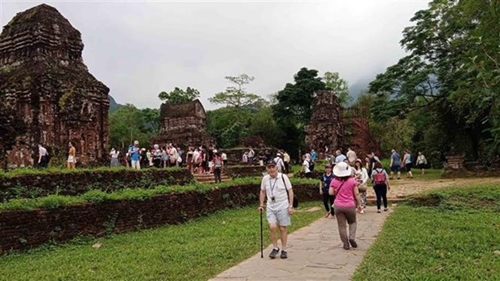On average, the site received up to 1,500 visitors a day in the first months of this year, mostly from the Republic of Korea, Japan, the U.S., the E.U., Malaysia, Indonesia, India, and China.
To better serve visitors, the board has been implementing several digital transformation projects to improve conservation efficiency and promote heritage values, including digitizing artefacts preserved at the site and the museum.
    |
 |
|
On average, the site receives up to 1,500 visitors a day in the first months of this year, mostly from the Republic of Korea, Japan, the U.S., the E.U., Malaysia, Indonesia, India, and China. |
Once the religious and political capital of the Champa Kingdom, My Son Sanctuary is located in a hilly landscape in Duy Phu commune, Duy Xuyen district, about 70 km Southwest of Central Da Nang city and 40 km from Hoi An city.
The sanctuary was recognized as a world cultural heritage site by UNESCO in 1999. It comprises eight groups of 71 monuments built throughout the 7th to 13th century. Having their spiritual origin from Hinduism of the Indian sub-continent, My Son temples were built to the Hindu divinities such as Krishna and Vishnu, but above all Shiva.
The first construction of My Son dated back to the 4th century under the reign of Bhadravarman for the worship of God Shiva-Bhadresvara. But later on, the temple was destroyed.
At the beginning of the 7th century, King Sambhuvarman had it rebuilt. Each new monarch came to My Son after his accession to the throne for the ceremony of purification and to present offerings and erect new monuments, which explains why My Son was the only place where Cham art flourished without interruption from the 7th to 13th century.
According to the UNESCO, conservation of the My Son monuments began in the early part of the 20th century soon after their discovery in modern times by French archaeologists. As a result of wars, many tower temples were damaged. However, preservation work has been carried out and the remaining tower temples have been maintained and are well-preserved.
Source: VNA